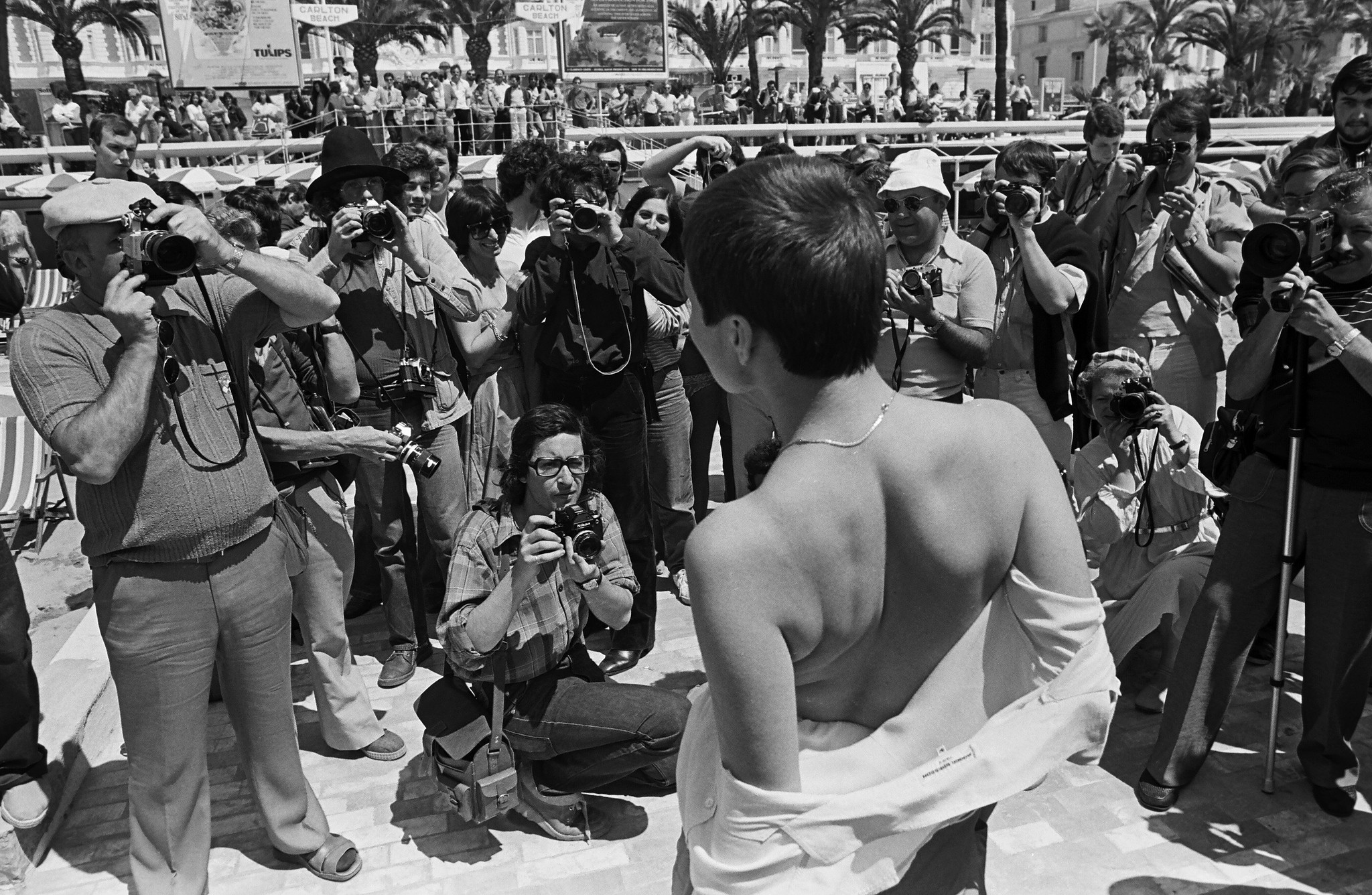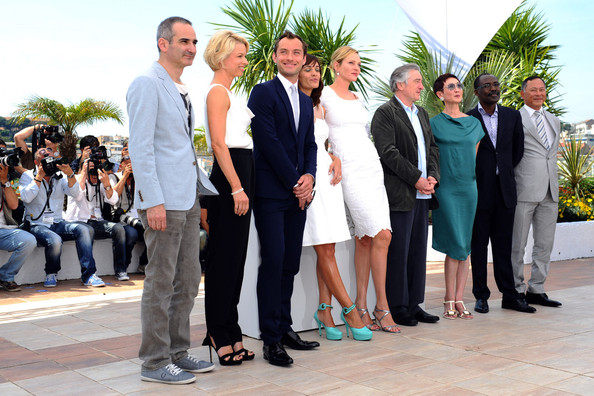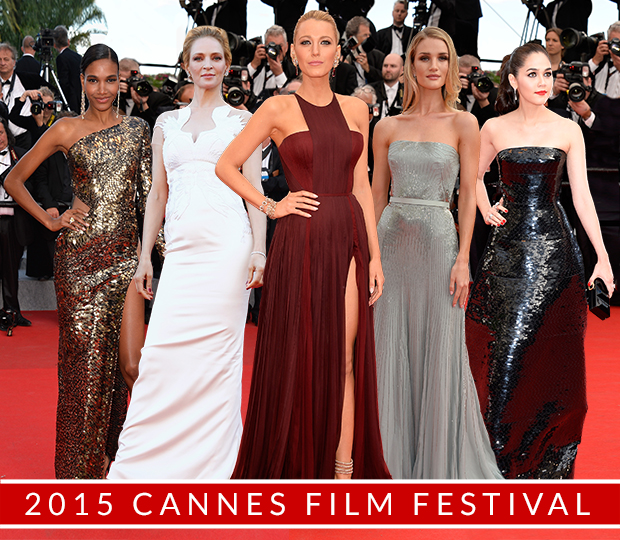

On the surface, a city such as Cannes perhaps might not strike you as the place to host the world's most famous film festival. It's not a capital city, or even near one. Yes, cinema was invented in France - but that was in Paris, not Cannes. And sure, the weather in Cannes may be nice, but that certainly isn't a unique selling point. So just how did a reasonably small resort town end up hosting the most prestigious film festival there is?
Like much of the world as we know it today, the Cannes Film Festival exists as an indirect result of the rise of the fascist regimes in Europe during the 1930s.
Its roots date back to 1932 when the first competitive international film festival was held in Venice. In those days, the Mostra di Venezia - and chiefly its awards - was as much about the national prestige of the participating countries as it was about the films. As the decade marched on, both the official selection and the prize-winners began to noticeably favour the countries of the fascist alliance, particularly Germany and Italy. Matters came to a head in 1938 when Jean Renoir's "La Grande Illusion" was overlooked for the festival's top prize - known back then as the Coppa Mussolini ("Mussolini Cup") - despite being the clear favourite amongst both festivalgoers and jury members. Instead, the Coppa was jointly-awarded to a two-part German film called "Olympia", commissioned by Joseph Goebbels to document Nazi successes at the 1938 Berlin Olympics; and "Luciano Serra, Pilota", made under the supervision of Il Duce's own son. When the results were announced, the French were of course outranged and withdrew from the festival. Both the British and American jury members also resigned in protest at the idea that politics and ideology were able to stamp all over artistic appreciation. "La Grande Illusion" - a largely anti-war film - was subsequently banned in Germany and Italy; Goebbels himself labelling it 'Cinematographic Enemy No.1'.

But Venice's folly turned out to be Cannes' triumph.
Later that same year, a group of critics and filmmakers got together to petition the French Government to underwrite the cost of running an alternative international film festival in France - one where films could be shown and compete without bias or political censorship. Afraid of upsetting Mussolini, the French government was initially lukewarm to the idea, but the powerful lobby group wasn't going to be easily dissuaded. Headed by Philippe Erlanger (head of Action Artistique Française), Robert Favre Le Bret (who would become the festival's longest serving president), and Louis Lumière (the co-inventor of cinema), the group put intense pressure on the government, which eventually caved in and gave the event the green light. Several locations were initially considered for the festival, but the final choice came down to either Biarritz on the Atlantic coast or Cannes on the Mediterranean. Officially, it was the city's "sunny and enchanting location" which clinched it for Cannes, however most people acknowledge that the real reason for its selection was the fact that the municipal authorities agreed to cough up the dough to build a dedicated venue for the event. The inaugural Festival International du Film was slated to kick-off on 1 September 1939; that month chosen by shrewd city officials who realised that such an event could be used to extend the summer tourist season by an extra two weeks. But the fledgling festival only managed its opening night before being closed down following the outbreak of World War II the following day. The festival remained in hiatus during the war, re-emerging for a second attempt on 20 September 1946 under the joint aegis of the French ministries of Foreign Affairs and Education. As the City of Cannes had yet to make good on its promise of a dedicated venue, the first festival-proper took place in the old winter casino with the 82-year-old Loius Lumière taking on the duties of inaugural jury president. Films presented for the first festival included Billy Wilder's "Lost Weekend", David Lean's "Brief Encounter", Roberto Rossellini's "Rome Open City", George Cukor's "Gaslight", Walt Disney's "Make Mine Music", Alfred Hitchcock's "Notorious", and Jean Cocteau's "Beauty and the Beast". Films from Charles Laughton, Howard Hawks, and Cecil B. De Mille were also screened out of competition. The first festival was generally regarded as a success by all and sundry, so for its sophomore outing in 1947, it was moved under the wing of the newly-formed Centre National de la Cinématographie (CNC), a government body charged with supporting and promoting the cinematic arts, and preserving France's screen history. Amongst its general organisational responsibilities, the CNC also took over the co-ordination of the submissions and selection process for the event. Indeed, in the early days, films were nominated by their respective countries rather than the festival itself, with the number of berths available to a given country being proportionate to the volume of its cinematic output. As a result, Cannes in the early days was more of a 'film forum' than a competitive event - with the CNC trying very hard to ensure that every film screened went home with some kind of award. Although the 1947 festival had also been successful by most measures, budget problems in 1948 saw the event go dark for a second time. Financial woes also prevented the 1950 festival from going ahead, but in between the 1949 festival managed to secure an impressive line-up of international cinema, including Fred Zinnemann's "Act of Violence", Michelangelo Antonioni's "L'Amorosa Menzogna", Joseoph L. Mankiewicz's "House of Strangers", David Lean's "The Passionate Friends", and Carol Reed's "The Third Man" (the top prize-winner for that year). 1949 also saw the City of Cannes finally make good on its promise of a dedicated venue for the event. Built on the present site of Hotel Palais Stéphanie, and completed in 1952, the brand new Palais Croisette was to be the festival's home for the next 30-odd years. By the early 1950s, the festival had experienced significant growth in scope and renown so it was decided to change the dates from September to April. The reason for the move was two-fold: firstly, many observers noted that competing festivals, such as Berlin and Venice, took place earlier in the year and consequently Cannes was missing out on a good deal of world premieres. Secondly, many in the local tourist industry questioned the value of holding such a large event at the end of the season when things were naturally winding down. With the move to spring, Cannes was able to lay the foundations for its 'King of Festivals' crown. After the 1950 wobble the next few festivals burst out of the gate with a range of films from the cream of international cinema. Between 1951 and 1953 over 105 feature films were presented in competition, including George Stevens' "A Place in the Sun", Alfred Hitchcock's "I Confess", Orson Welles' screen adaptation of "Othello", John Ford's "The Sun Shines Bright", Raj Kapoor's "Awara", and a back-to-back triple play from Luis Buñel ("Subida al Cielo", "Los Olividados", and "El").

In 1954 two things happened which would change the image of Cannes forever.
The first involved an idea, put forward by Parisian jeweller Suzanne Lazon, that the festival award trophies should incorporate a palm leaf motif (as the trees had long since become an icon of the city). The initial concept was sketched out by legendary director Jean Cocteau - a friend of Lazon - and went down so well with the festival brass that the top prize, the Grand Prix, was renamed the Palme d'Or the following year. The second change experienced in 1954 was the introduction of 'sex' to the festival's image. During a photo call for Robert Mitchum, French starlet Simone Sylva started the now infamous tradition of 'getting one's boobs out' on the beach for the cameras. A bemused Mitchum stood by as Miss Sylva's assets hit the international news wires, and with them, a lasting image of Cannes was cast in the world's mind. And as the decade progressed this image was only boosted by the presence of a bikini-clad Bridgette Bardot, who, by the end of 1950s, had become almost a permanent fixture on the beach during the festival. Despite the attention generated by the off-screen antics of its attendees, the festival continued to present a range of films from top international directors. Indeed, the 1950s saw the selection of films starting to read like a list of usual suspects (albeit talented ones) as Cannes alumni were invited back with their next films - a practice which continues to this day. Highlights from the remainder of the decade included Fred Zinnemann's "From Here to Eternity", Walt Disney's "The Living Desert", Satyajit Ray's "Pather Pantchali" and "Parash Pathar", Federico Fellini's "Nights of Cabiria", Louis Malle's "Le Monde du Silence", Stanley Donen's "Funny Face", and a trio from Ingmar Bergman, "Smiles of a Summer Night", "The Seventh Seal", and "So Close to Life". In the early days Cannes had largely been an event for tourists and socialites who were often more interested in attending the many parties in the expensive hotels and luxury villas than they were in watching the films. However, as the festival's popularity increased, it gradually became a place for the international film industry to gather, do business, and discuss future projects. In 1959, ten participants and a canvas screen on the roof of the Palais Croisette kicked of the first Marché du Film, with the event becoming an official part of the festival in 1961. Whist the arrival of the 1960s found many western countries in the midst of large scale social and economic change, the festival was building on the success of the previous decade and had begun to hit its stride. In 1965, the festival appointed its first female jury president, Olivia de Havilland (followed the next year by Sophia Loren), and the decade saw a wide variety of films presented including Fellini's "La Dolce Vita", Buñuel's "Viridiana", John Fankenheimer's "All Fall Down", Sidney Lumet's "Long Day's Journey into Night", Robert Mulligan's "To Kill a Mockingbird", François Truffaut's "Le Peau Douce", Masaki Kobayashi's "Kwaidan", David Lean's "Doctor Zhivago", Orson Welles' "Chimes at Midnight", Michelangelo Antonioni's "Blow Up", Costa-Gavras' "Z", and Dennis Hopper's "Easy Rider". However, while the official selection witnessed many of the Cannes alumni present some of their most seminal films, there was a feeling in some quarters that it was becoming increasingly difficult for newer filmmakers to get their films shown at the festival. It was this sentiment which led to the creation of the world's first festival "sidebar", the Semaine Internationale de la Critique ("International Critics' Week"), founded in 1962 as a parallel section focussed on presenting the work of first and second time directors.
Although by the time the 1960s had rolled around, the festival was pretty much over its shaky past, there was to be one more hiccup in 1968.

Amidst an undercurrent of general discontent in France, the culture minister André Malraux tried to fire the co-founder and head of the Cinématèque Française, Henri Langois, over a long-running budget dispute. Langois was an extremely popular and respected figure, particularly with the French "new wave" directors, so when the news of the sacking hit Cannes towards the middle of the 1968 festival, all hell broke loose. Louis Malle and Roman Polanski both immediately resigned from the festival jury, joining the call from François Truffaut, Jean-Luc Godard and a host of other French filmmakers, for the festival to be closed down as a sign of protest. The feelings ran so hot that on 19 May 1968 the directors burst into the noon screening and literally hung from the curtains to prevent the festival from continuing. The festival was cancelled shortly after with many foreign filmmakers finding themselves trapped in France for several days in the face of the nationwide strikes that had brought the country to a standstill. The French authorities eventually brokered a deal to end the strikes, and the filmmakers successfully forced Malraux to reinstate Henri Langois, but it was too late to resume the festival. However, the events of 1968 did leave an impression on another group of French filmmakers, amongst them Robert Enrico and Jacques Doniol-Valcroze, who were appalled that the festival had been used as a political platform by Truffaut, Godard et al. Together with a group of colleagues they formed the Société des Réalisateurs de Films and gave birth to the second festival sidebar, Quinzaine des Réalisateurs ("Directors' Fortnight"). The Quinzaine was intended to be a forum where films could be presented free from "... all forms of censorship and diplomatic considerations." Its spirit was immortalised by a mildly Orwellian quote from French director Pierre Kast: "All films are born free and equal: we must help them to remain so."

The 1970s brought with them profound change, both in the world of filmmaking and within the festival itself.
In the early days festival films had been chosen and submitted by officially appointed representatives from their country of origin. But in 1972 the board of directors decided that from that point on the festival itself would look after the process of choosing films for inclusion in the official selection, thus setting the blueprint for the selection format which is used by most modern international film festivals today. As far as the films went, the 1970s was largely dominated by the new "golden boys" of American cinema. With Hollywood in a transitional phase (the studio system was long dead, but the corporations had yet to become interested in movies), directors such as Martin Scorcese, Francis Ford Coppola, and Robert Altman, were at the forefront of cinema in the 1970s - in effect, America's answer to the French new wave of the 60s. And Cannes certainly approved. Over the course of the decade American new wave films screened included Robert Altman's "M.A.S.H" and "3 Women", Francis Ford Coppola's "The Conversation" and an unfinished "Apocalypse Now" (which still managed to clinch the Palme d'Or), Martin Scorsese's "Alice Doesn't Live Here Anymore" and "Taxi Driver", and Steven Spielberg's "The Sugarland Express". But the 1970s in Cannes wasn't only about American movies. Filmmakers from Europe and further a field were well represented by films including John Boorman's "Leo the Last", Louis Malle's "Murmur of the Heart", Milos Forman's "Taking Off", Andrei Tarkovski's "Solaris", Ken Russell's "Mahler", Rainer Werner Fassbinder's "Fear Eats the Soul" and "Despair", Wim Wenders' "Kings of the Road" and "The American Friend", Roman Polanski's "The Tenant", Ridley Scott's "The Duellists", Alan Parker's "Midnight Express", and Werner Herzog's "Woyzeck". In 1975, festival boss Maurice Bessey decided to expand the scope of the event further by introducing three new out of competition sidebars to the official selection: Les Yeux Fertiles ("Fertile Eyes"), l'Air du Temps ("Spirit of the Time"), and Le Passé Compose ("The Perfect Past"). While this seemed like a good idea at the time, it became quick apparent that the addition of these sidebars overly complicated the official selection, so in 1978 new Delegate Générale Gilles Jacob (now festival president) rolled up these events into a single sidebar: Un Certain Regard. That same year Jacob also introduced the Camera d'Or, an award for the best first-time feature film in any section of the festival.

The arrival of the 1980s saw the festival facing the reasonably serious problem of having outgrown its home in the Palais Croisette.
The arrival of the 1980s saw the festival facing the reasonably serious problem of having outgrown its home in the Palais Croisette. Not wanting to lose the lucrative event, the City of Cannes commissioned a new Palais des Festivals et des Congrès on the site of the old winter casino. Completed in December 1982 as a dual festival and conference venue (and quickly dubbed "The Bunker" by Cannes regulars), the new Palais hosted its first festival in 1983. To celebrate the opening, the City of Cannes invited many stars of past and present to leave their hand prints in clay outside the building on Esplanade Georges Pompidou. Moviewise the 1980s were heralded by the comeback film from legendary Japanese director, Akira Kurosawa. Financed by George Lucas and Francis Ford Coppola, Kurosawa's "Kagemusha" shared the 1980 Palme d'Or with Bob Fosse's "All That Jazz". Other key films screened at Cannes during the 80s included, Bruce Beresford's "Breaker Morant", Bernardo Bertolucci's "Tragedy of a Ridiculous Man", Michael Mann's "Violent Streets", Costa-Gavras' "Missing", Jean-Luc Godard's "Passion", Terry Jones' "Monty Python - The Meaning of Life", Peter Weir's "The Year of Living Dangerously", Win Wenders' "Paris, Texas" and "Wings of Desire", Alan Parker's "Birdy", Peter Bogdanovich's "Mask", Roland Joffe's "The Mission", Peter Greenaway's "Drowning By Numbers", Krzysztof Kieslowski's "A Short Film About Killing", Jane Campion's "Sweetie", and Steven Soderbergh's "Sex, Lies, and Videotape" (the surprise Palme d'Or winner in 1989).

The 1990s kicked off with a continuation of the independent theme set by Soderbergh the year before.
During the early part of the decade films such as David Lynch's "Wild at Heart", Ken Loach's "Hidden Agenda", the Coen Brothers' "Barton Fink", Lars von Trier's "Europa", and Spike Lee's "Jungle Fever" all grabbing attention on the Croisette. Other notable films included James Ivory's "Howard's End", Robert Altman's "The Player", Joel Schumacher's "Falling Down", Mike Leigh's "Naked", and of course Quentin Tarantino's "Pulp Fiction". In 1993, New Zealander Jane Campion also made festival history, becoming the first female director to win the Palme d'Or (for "The Piano"). Although most of the action during the 90s took place on screen, the festival did pause in 1997 to celebrate its 50th anniversary. To mark the occasion a host of previous Palme d'Or winners were invited back to the festival for photo opportunities and to pay tribute to 50 years of film in Cannes. The festival also presented legendary Swedish director Ingmar Bergman with a special award - the Palme des Palmes ("alm of Palms") - in recognition of his status as a true master of the cinematic medium. The following year, the festival also finally acknowledged the importance of the role played by film schools in developing new talent with the creation of Cinéfondation, a new sidebar dedicated to showcasing the best work from training institutions around the world. The remainder of the decade continued to be focussed on an eclectic mix of films from across the globe. Highlights included Emir Kusturica's "Underground", Larry Clark's "Kids", Lars von Trier's "Breaking the Waves", the Coen Brothers' "Fargo", Ang Lee's "Ice Storm", Curtis Hanson's "LA Confidential", Thomas Vinterberg's Dogme 95 offering, "Festen", Terry Gilliam's "Fear and Loathing in Las Vegas", Pedro Almodovar's "All About My Mother", and Takeshi Kitano's "Kikukiro".

As the clocks ticked over to the year 2000, Cannes was busy putting together an official selection which would highlight the importance of digital technology to the future of filmmaking.
The first palm of the new millennium went to Lars von Trier's DV-shot "Dancer in the Dark", and since then a whole host of digitally-shot films have appeared in every part of the official selection. But aside from the revolution seen in the way festival films were being made, several other key changes occurred at Cannes during the first half of the decade. In 2002, the festival got an image make-over, losing its somewhat lengthy title to simply becoming known as the "Festival de Cannes". Two years later the Cannes Classics sidebar was inaugurated to present films of archival importance from previous festivals and further a field. And in 2005, a new world cinema section - Tous les Cinémas du Monde - was added to help showcase films from countries with a historically-low cinematic output. As far as the official selection has gone, key films presented at Cannes since 2000 have included Wong Kar-Wai's "In the Mood for Love", the Coen Brothers' "The Man Who Wasn't There", Baz Luhrmann's "Moulin Rouge", Michael Winterbottom's "24 Hour Party People", Roman Polanski's "The Pianist", Michael Moore's "Bowling for Columbine" (the first documentary film ever accepted in competition), Lars von Trier's "Dogville", Gus van Sant's "Elephant", Walter Salles "The Motorcycle Diaries", Robert Rodriguez and Frank Miller's "Sin City", and Atom Egoyan's "Where the Truth Lies". Today, Cannes is the most famous of all film festivals and one of the largest media events on the planet. The festival has an annual budget of around €20m, half of which comes from the French Ministry of Culture and Communications (through the Centre National du Cinéma), with the rest from the City of Cannes, various regional authorities, and a large group of corporate sponsors. Each year more than 1,500 films from over 100 countries are submitted to be considered for a very limited number of berths in the official selection. The stars still show up to bask in the limelight, the crowds still gather to watch, and Cannes' reputation as the king of film festivals just gets stronger each year.